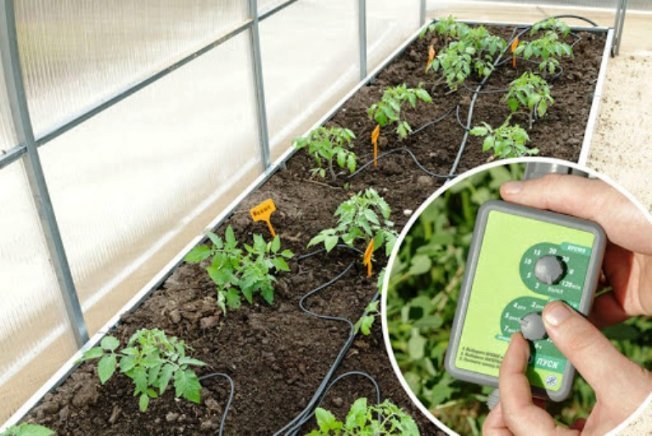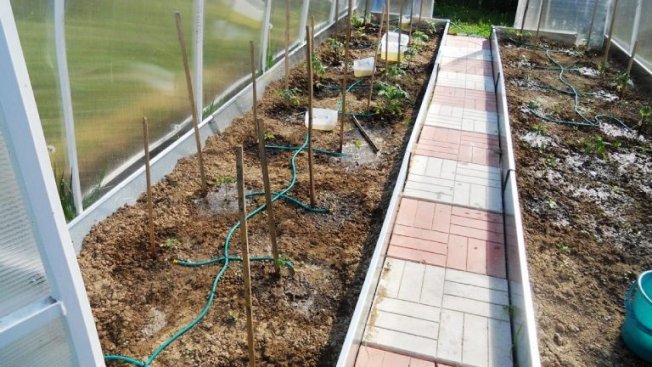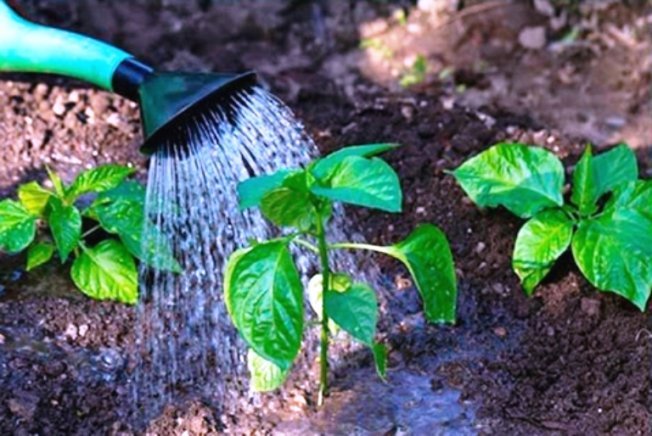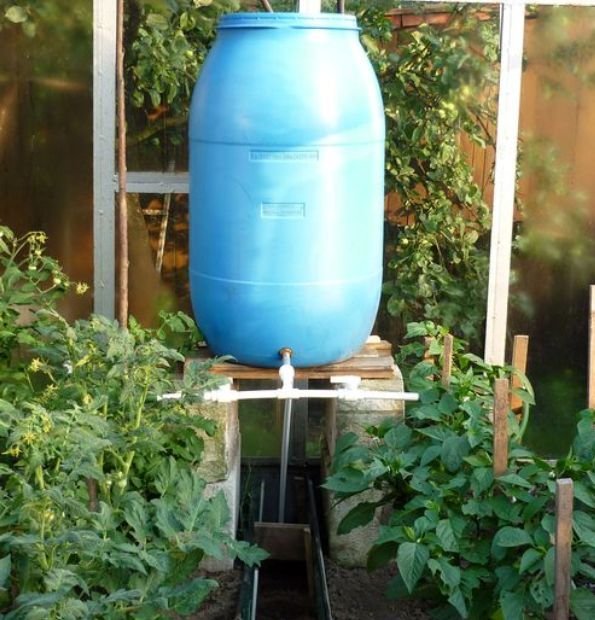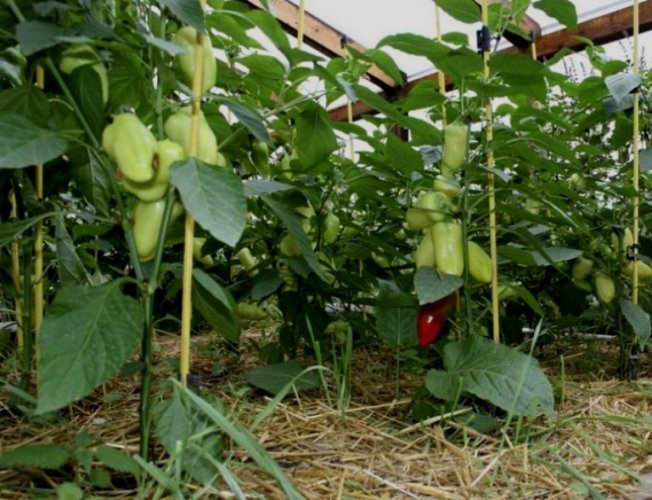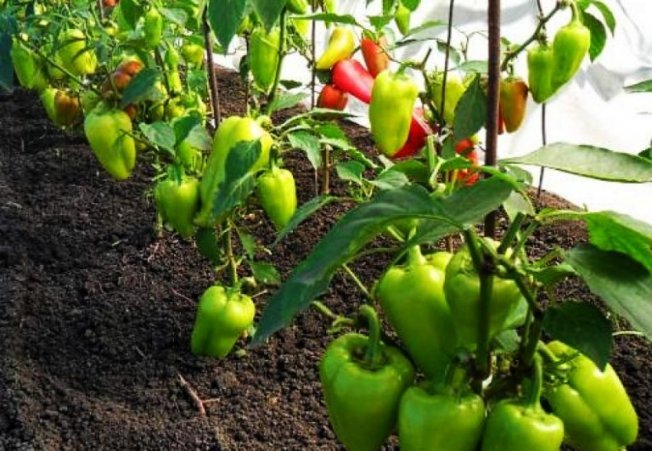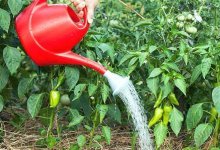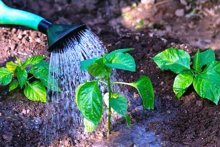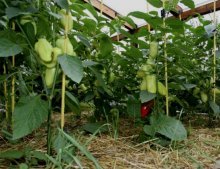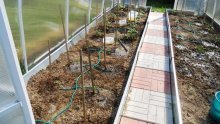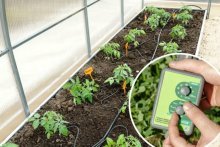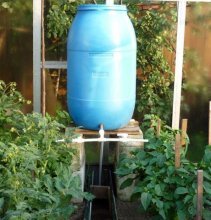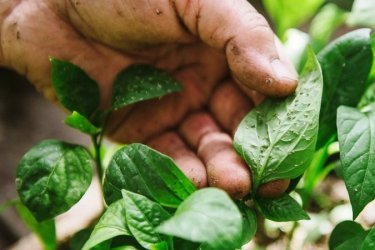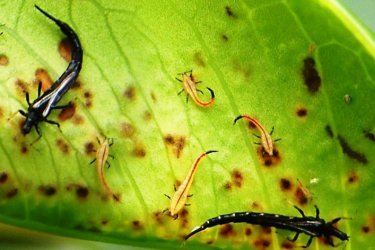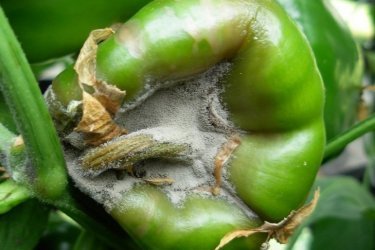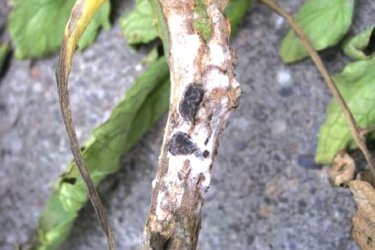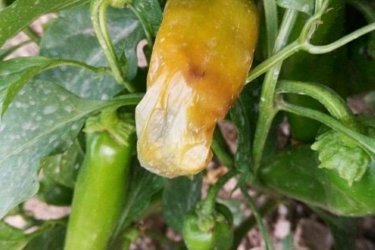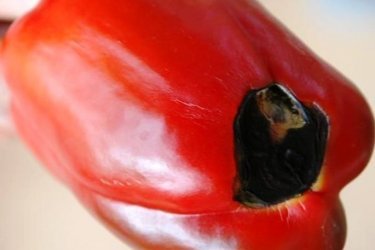Watering sweet peppers in a greenhouse after planting seedlings and before the crop ripens
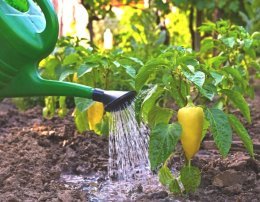
It is possible to obtain a stable harvest of sweet peppers in a greenhouse only with proper care. High-quality watering of plants after planting seedlings and before harvesting is an important component.
Content:
- Factors on which the harvest depends
- What types of irrigation are used
- How often should peppers be watered?
- Watering in a greenhouse in a greenhouse
- What water to use
- How to water in the heat
- Combination with fertilizing
- Watering sweet peppers in a glass greenhouse
Factors on which pepper yield depends
The success of growing any crop cannot depend on one factor, but watering sweet pepper in a greenhouse can be considered as one of the most important components of care.
The second factor is air humidity, which largely depends on the frequency of moisture application, the material from which the greenhouse is made and the quality of ventilation.
Too moist soil and air will also negatively affect the development of the plant itself and its yield, and increase the risk of developing fungal diseases.
What types of irrigation are used
Watering sweet peppers in a polycarbonate greenhouse is carried out in different ways.
We indicate them in the table.
| View | How does it work |
| Auto | Switching on and off is automatic; switching on and off the water supply is carried out using sensors set for a certain time. A remote control or a centralized power supply is used for control. |
| Mechanical | Less perfect. It will be necessary to ensure a constant supply of water to the system. You will need to adjust the water pressure yourself. Correct connection to a water source (well, borehole, centralized water supply system) will allow you to obtain an automated water supply that does not require careful monitoring and manual adjustment. |
| Manual | This is done using buckets, watering cans or a hose connected to a water source. When using a hose, it is advisable to use a dispersive nozzle, because You can wash the roots with water pressure. All work is done manually |
The most rational option is to use an automatic system. During the preparation process, you will need to calculate the plant’s daily moisture requirement at a certain stage of development.
This question is quite important, since there are several options for adding water during automatic irrigation:
- drip;
- sprinkling;
- intrasoil.
The requirements for the quality of pipes and models of nozzles depend on the chosen option. For watering peppers and seedlings subsurface irrigation is rarely used, because not all varieties are particularly moisture-loving, and excess moisture can negatively affect plant development.
The use of a drip system provides undeniable advantages; it is more economical in terms of water consumption, which is supplied directly to the roots of the plant. Excessive air humidity, which is observed during sprinkling, can lead to the development of fungal diseases.
Let's watch a video on how to make drip irrigation in a greenhouse with your own hands:
How often should peppers be watered?
First, let us remind you how to moisten the soil for seedlings: depending on the air temperature in the room and its dryness, it is recommended to water the seedlings after 2-3 days.
After transplanting the seedlings into the greenhouse, fill the bed, making sure that the plants do not squint and the stems should stand straight. The next watering is done in a week. Use settled water at a temperature not lower than +23 + 25 C.
Sprinkling on a sunny day is not recommended; water drops will act like lenses, and the light refracted through them can cause burns on the sheets.
Moisten the soil in the evening, or early in the morning, before sunrise. Upon completion, it is advisable to ventilate the greenhouse well.
Let's watch an interesting video about watering sweet peppers in a greenhouse after planting:
Watering peppers in a greenhouse: basic rules
Watering sweet peppers in a greenhouse after planting seedlings requires the right approach:
- During the period of active growth, before flowering begins, apply 2-3 times a week.
- Since the plant is self-pollinating, during the flowering period water is applied only to the root zone; washing off pollen during sprinkling will negatively affect the number of ovaries.
- In the process of ovary formation, reduce to 2 times a week.
- After the fruits appear and until the end of harvesting, the plants should be watered once every 7 days.
A secret from experienced vegetable growers: you can speed up the ripening of peppers by stopping soil moisture for 10-12 days.
To prevent excessive evaporation of moisture and prevent the formation of crust, the bed is mulched; dry or fresh grass, straw, and sawdust can be used as mulch.
If the soil is not mulched, it will need to be systematically loosened.It should be taken into account that the roots of the plant are located close to the surface; the soil must be processed carefully so as not to harm the plant.
When growing without mulching, they also practice watering plants in a funnel, which is made on one side, close to the bush. After the water has completely entered the soil, the funnel is filled up.
The volume of water applied is from 1 to 1.2 liters per plant. The liquid is used warm. If the question arises about what to choose: abundant watering and more frequent watering, adding less moisture, then preference should be given to the latter.
In relation to pepper, you can use “dry watering”, which involves thoroughly loosening the soil. But they can be used periodically; they cannot completely replace the addition of water.
What water to use
You can use any water to water sweet peppers in a greenhouse. If tap water has been treated with chlorine, then it must be left to stand for 24 hours. The best option is to use rainwater or from a well.
Before watering, the water should be heated to a temperature of +22 +25 C; it is most convenient to install a large container in the greenhouse and replenish the liquid in it as it is consumed.
To soften hard water, wood ash is infused in it at the rate of 0.5 cups per bucket of water.
How to water in the heat
In extreme heat, it is not recommended to water more frequently; the optimal frequency is once every two days. High humidity at high temperatures will increase the threat of putrefactive processes in the roots. To prevent the plant from experiencing stress, the water must have a temperature of + 19 C and above.
Lack of moisture causes the stems to become woody, the fruits are crushed, and the yield drops.
Combining fertilizing bell pepper with watering
Soil poor in nutrients and minerals will not allow for a rich harvest. Therefore, systematic feeding of plants should be carried out, which can be combined with watering.
You can apply complex mineral fertilizers, infusions of mullein or herbs. Addiction to organic fertilizers can lead to excessive growth of green mass and branching of bushes, but to the detriment of yield. Both foliar and root fertilizers are used.
Watering sweet peppers in a glass greenhouse
When making a glass greenhouse yourself, you should give preference to glass whose thickness exceeds 5 mm. The features of this material make it possible to create a design that does not provoke the accumulation of condensation on the walls.
Uniform distribution of moisture throughout the entire volume of the greenhouse allows you to reduce the number of waterings and achieve significant water savings. Thanks to these features, glass greenhouses are very popular among summer residents.
Watering sweet peppers in a greenhouse after planting seedlings varies depending on the stage of plant development. When planning plant care, we should not forget that excess moisture for bell peppers can be just as harmful as its lack.
Pests


